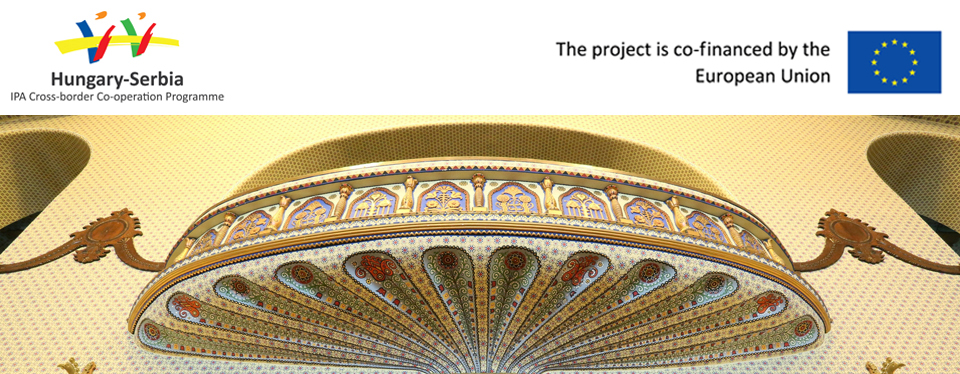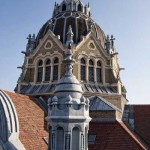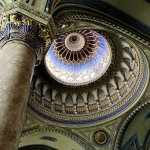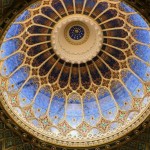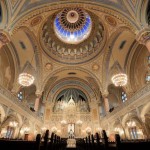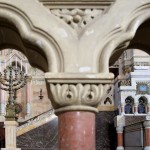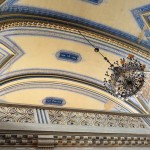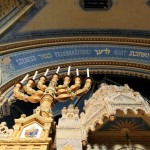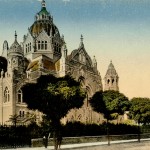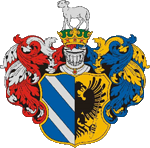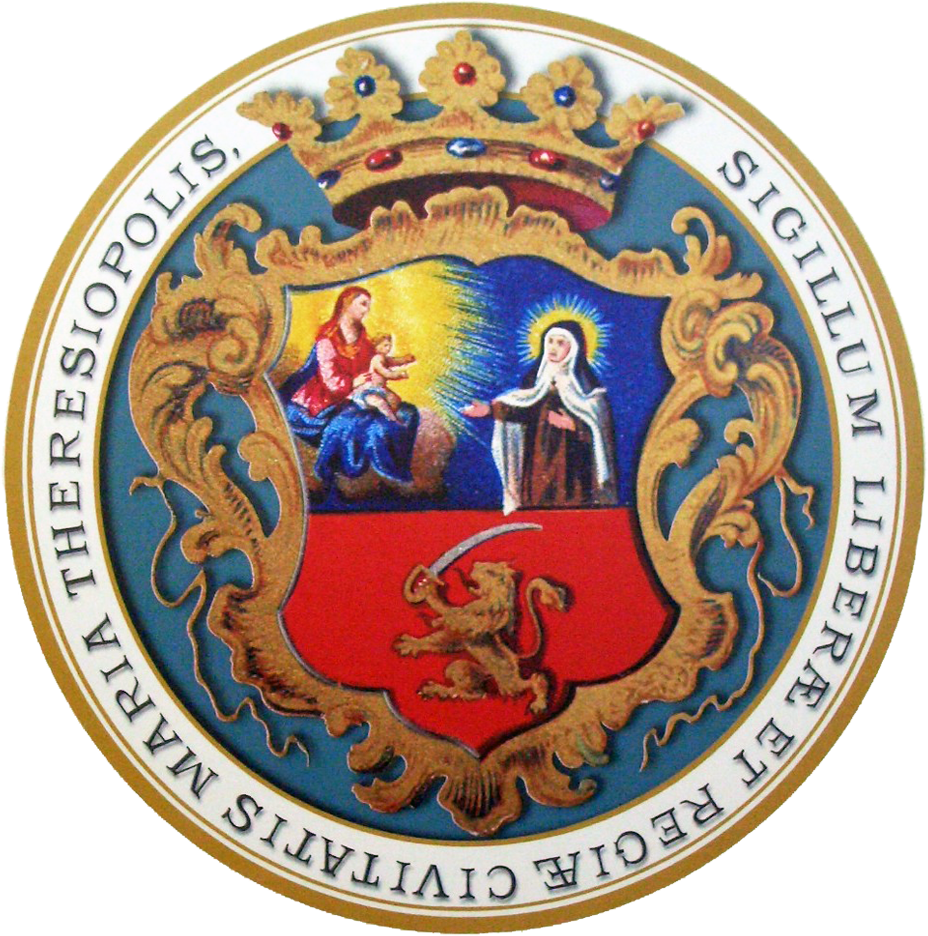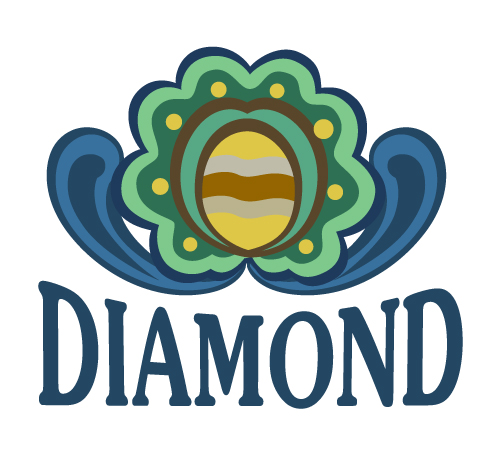| Name of the building | Szeged, Synagogue |
| Current name | same |
| Town, location | 6-10 Jósika Street, Szeged |
| GPS coordinates | N 46° 15′ 13.22″, E 20° 8′ 32.15″ |
| Date of construction | 1900–1903 |
| Stylistical characteristics | Eclectic, with Moorish and Art Nouveau stylistic elements |
|
Architect Builder Contractors |
Lipót Baumhorn (1860–1932) Israelite Community The chief contractors were János Szilágyi, Ede Schaar and Vilmos Stark, the stained glass windows were made in Miksa Róth’s workshop, and besides them, many local craftsmen and trades took part in the construction. |
| Monument classification | Under monument protection. |
|
The original function of the building Changes Its function has not been changed.The renovation of the Synagogue is constant. Between 1979 and 1980, a greater volume renovation work took place during which the roof structure was renewed by recrafting several decorative tin elements; the windows, benches, fences and gates also went under renovation. The terrazzo floor of the church was also replaced. In 1991, the decorative bars of the ground windows were put in place, and the renovation of the cupole and organ was finished, the renewal of the roof and its ornaments is still underway. |
|
| Description and qualities of the building | |
|
This magnificent building owes its existence to the creative cooperation of two talented men, Immánuel Löw, the scientist chief rabbi, the creator of the intellectual and religious programme and Lipót Baumhorn, the exceptionally talented and skilled architect of the Hungarian synagogues. It was built in a fortunate period, at the zenith of the city’s reconstruction, and in the maturing process of the establishment of an urban life. At the time when the affluence of the Szeged Jews, their endeavours for intellectual and religious revival coincided with the architectural innovation of the period, the reinforced concrete, the boom of the neostyles, the taste of the Art Nouveau refashioning everything, but mainly with architectural genius and skilfulness. Its supporting structure hides numerous engineering innovations, and the architect’s imagination was transplanted into forms and remarkable spectacle, thanks to the craftsmanship and entrepreneurial spirit, which was ensured by tradesmen and craftsmen from Szeged and its environs. The grandiose and graceful dome embellishes the cityscape with its majestic Renaissance and Baroque forms. The curved elements of the cupola, following the structure of the dome, and the huge forms of the roofing are bordered by finely laced, sophisticated plate adornments, pinnacles and windows, representing various architectural neostyles. The oriental influence and the lavish ornamentation of the roof decorations and external facades reflect the Moorish style, which is further enriched with Renaissance elements here and there. Byzantine and Arabic stylistic elements also appear in the formations of the facade. This was the architectural fashion at the turn of the century, but here the sacral function of the building renders meaning to the combination of various styles of Oriental and European origin. From this diversity, from the masterly mixed combinations of styles, a majestic building, a canon of clear structure was created, giving a spectacular appearance of the dome rising to the sky and to the noble materials used to the construction. The externally also magnificent the New Synagogue reveals its real treasures upon entering its interior. Only about a few buildings can it be stated that the structure, ornamentation, colours and light effects so enrichingly affect each other as in case of the Szeged Synagogue. The most magnificent part is the dome interior which symbolizes the creation of the world. With its glorious sight, it represents the realm of heaven and the world of beliefs. In the glass cupola depicting the starry sky, the experience of the endless space is visualized with blue, darkening upward from the greenish-brownish ornamental border of the dome, which is adorned with flowers symbolizing the earth. We cannot find figurative depictions, devotional pictures and sculptures because the rules of the Jewish religion do not allow them. They are replaced by ornamental frescos, splendid stained-glass windows that depict the tenets providing foundation for the Jewish religious life applying floral ornaments and inscriptions. Manó Róth was the artist who created such an awe-inspiring sight, painting the glass windows with beautiful colours. The altar is another great embellishment of the church interior. Among the paraphernalia, the menorahs and the chandeliers adorning the balustrade are exceptionally beautiful. |
|
| References
Nagy Zoltán, A szecessziós építészet Szegeden, Szeged története 3/1, Szerk.: Gaál Endre, Szeged, 1991. Csongrád megye építészeti emlékei, Szeged, 2000. Tóth Ferenc (szerk.),O. Csegezi Mónika szócikke Dusha Béla, Az élő zsinagóga, Szeged, 2009. Bagyinszki Zoltán – Gerle János, Alföldi szecesszió, /Art Nouveau in the Alföld Debrecen, 2008. |
|

